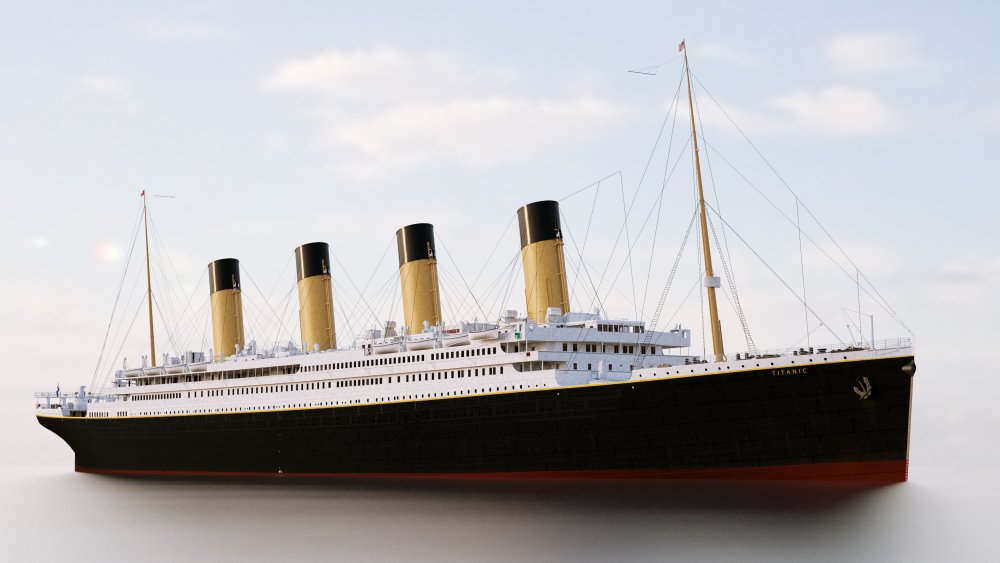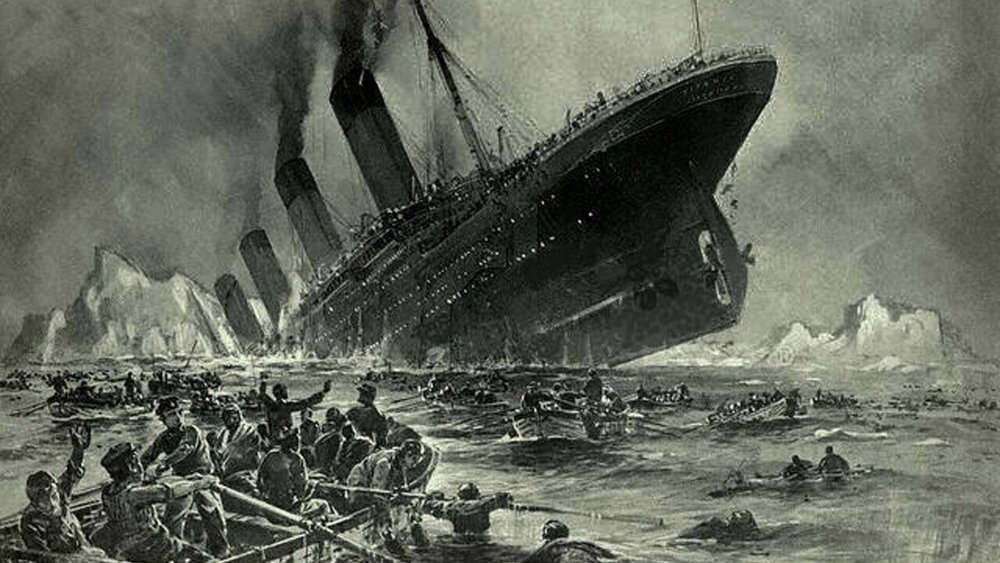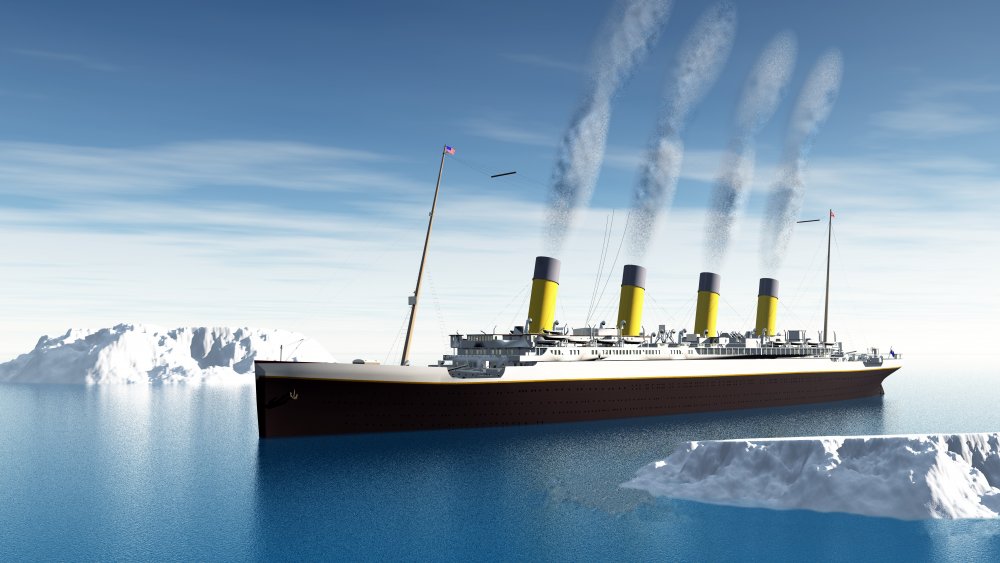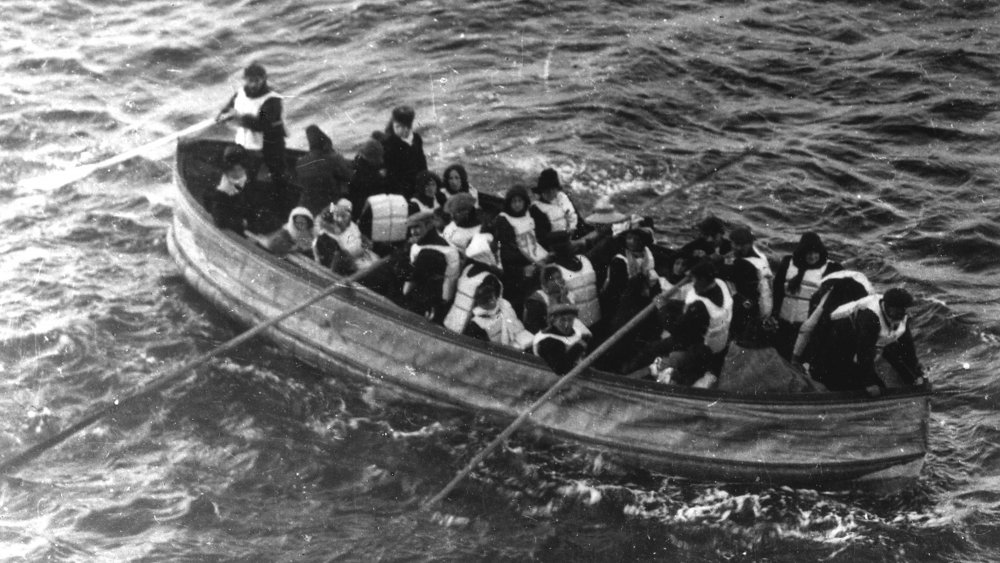Chilling Ways The Sinking Of The Titanic Was Foreshadowed
You probably know the basics of the Titanic disaster already. Per History, on April 10, 1912, the R.M.S. Titanic set sail on its maiden voyage, from the UK to New York. The Titanic had been heralded as an "unsinkable" ship and a breakthrough in design. And yet, on the night of April 15, the Titanic struck an iceberg, tearing a hole in its hull. As the Titanic sunk into the icy waters, over 1,500 of its 2,240 passengers died — primarily because the ship lacked sufficient lifeboats.
The sinking of the Titanic is remembered as one of the greatest maritime tragedies in history. Who could have predicted such a random, terrible incident? As it turns out, lots of people.
Prior to the Titanic disaster, there were at least three different fiction stories about eerily similar naval accidents. We can't tell you why the Titanic was so foreshadowed in fiction; that's a coincidence we may never have a satisfying answer to. But we can still inform you about the stories that foretold the disaster. Let's start with the strikingly prescient novella Futility.
Morgan Robertson described the sinking of the 'Titan' in an 1898 novella
In 1898, Morgan Robertson published the novella Futility, which was later renamed The Wreck of the Titan. Per OZY, the short book describes a fictional ocean liner named the Titan which is praised as an "unsinkable" ship. And yet, one April night, the Titan strikes an iceberg off of Newfoundland. It sinks, and the majority of its passengers die.
The parallels between this story and the actual Titanic disaster are obvious. The names are nearly identical, and the Titan and the Titanic have similar designs. Per Syracuse.com, the Titan is 800 feet long, the Titanic 883 feet, and both can reach speeds close to 25 knots. Likewise, the Titanic had just 20 lifeboats, while the fictional Titan had 24.
When the Titanic went down 14 years after Robertson's story came out, Robertson became famous. Naturally, people called him a clairvoyant, but he was quick to distance himself from this label. Instead, he explained that he was merely an expert in ocean travel; Robertson's father had been a sea captain, and Robertson had accompanied him on voyages since childhood. But is Robertson's naval expertise really enough to explain the prescience of his story? Before you decide, you should also know that, per Wired, Robertson later published a later story called "Beyond the Spectrum." In it, a war breaks out between the United States and Japan due to a Japanese sneak attack on U.S. ships. Weird. ...
A 1912 short story foretold the speed and location of the Titanic's crash
Yet another story bore striking similarities to the Titanic disaster. "The White Ghost of Disaster" was published in Popular Magazine in 1912 — the same year that the Titanic sank. The story was written by Thornton Jenkins Hains under the pen name "Captain Mayn Clew Garnett." (Per The New York Times, Hains had earlier been put on trial as an accomplice to murder; his tarnished reputation is probably why he preferred writing under a pseudonym.)
According to CBC Radio Canada, "The White Ghost of Disaster" describes a fictional ship named the Admiral. The Admiral is 800 feet long; you'll recall that the Titanic was 883 feet. The Admiral strikes an iceberg in the North Atlantic and sinks, and many perish due to the small number of lifeboats. Most interestingly, though, the Admiral crashes into the iceberg at a speed of 22.5 knots (or about 26 mph). The Titanic would later travel at this exact same speed when it met its doom.
Hains's story was still in the newsstands when the real Titanic sank on April 15, 1912. Seeing such similar stories in the "fiction" and "current events" sections must have been quite confusing to 1912's news readers.
W.T. Stead's story also anticipated the disaster -- and Stead later died on the Titanic
Believe it or not, there was yet another story which predicted the Titanic disaster. In perhaps the most striking coincidence yet, this story's author would perish on board the actual Titanic in 1912. The author in question was W.T. Stead, a British journalist. Per Business Insider, Stead published a short fiction story in 1886 titled "How the Mail Steamer Went Down in Mid Atlantic by a Survivor." In it, a large ship named the Majestic sets sail from Liverpool to New York City. The Majestic collides with a smaller ship (not an iceberg this time) and sinks. Only 200 of the 700 passengers survive due to the insufficient number of lifeboats.
The story alone isn't that similar to the Titanic disaster — not when you compare it to the two above. But the kicker is that W.T. Stead would later become a passenger on board the Titanic during its maiden voyage. According to Titanic Memorials, Stead had been invited to a peace conference in the U.S. by President William Taft. Per Oxford, on the night of the Titanic's fateful crash, Stead was seen helping women and children into the lifeboats. Stead later froze to death, or drowned.
Ironically (per Lost Voices from the Titanic), Stead had accompanied his 1886 story with the warning, "This is exactly what might take place and will take place if liners are sent to sea short of boats."



